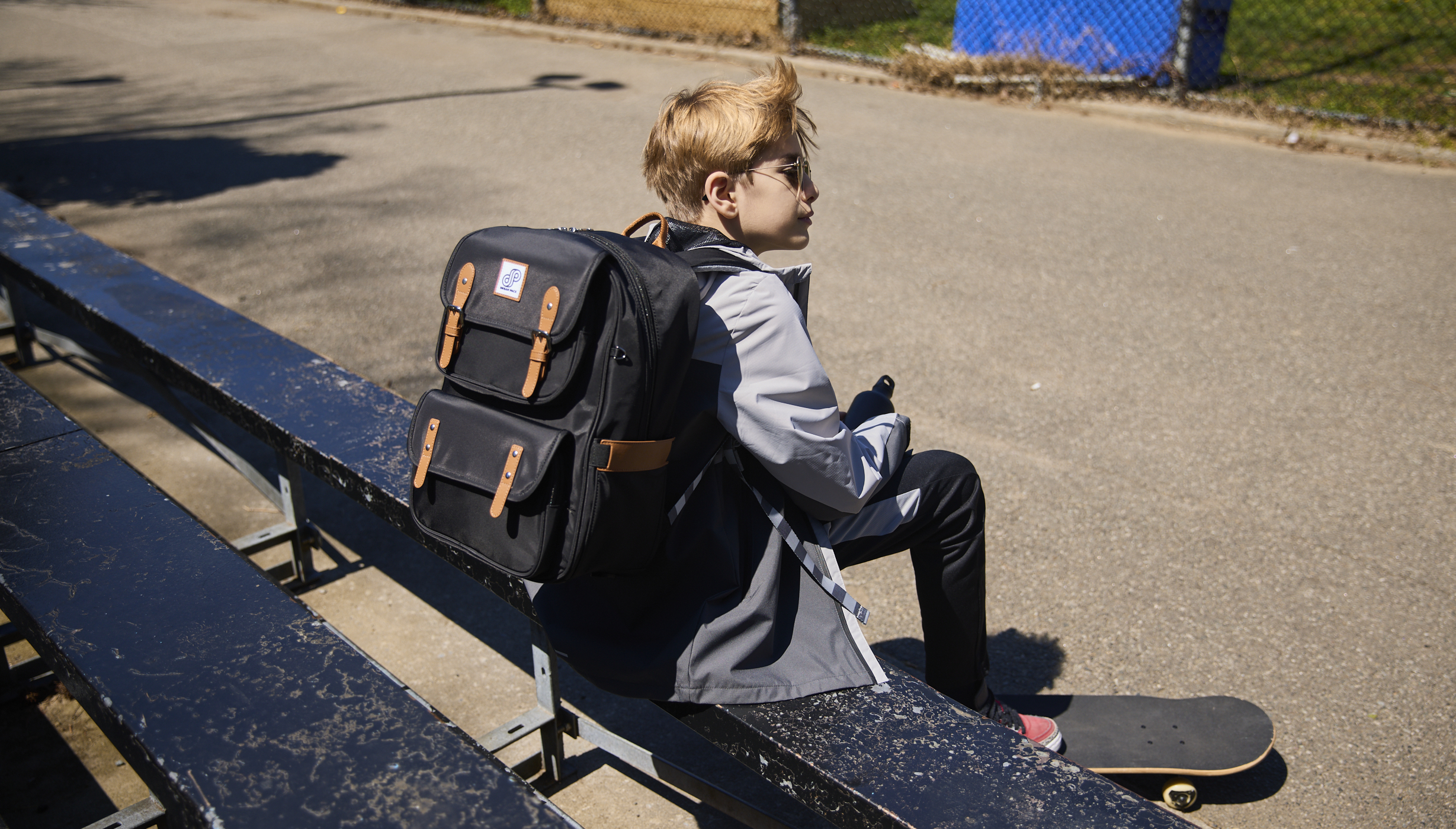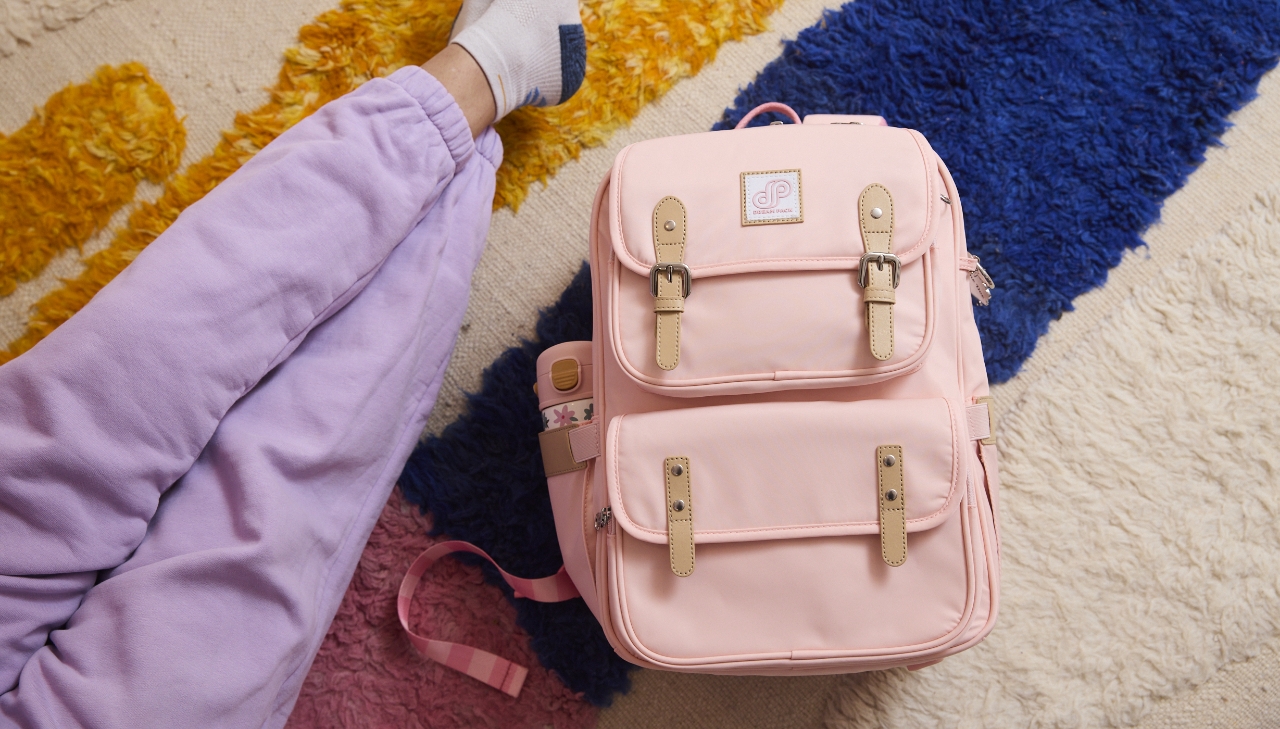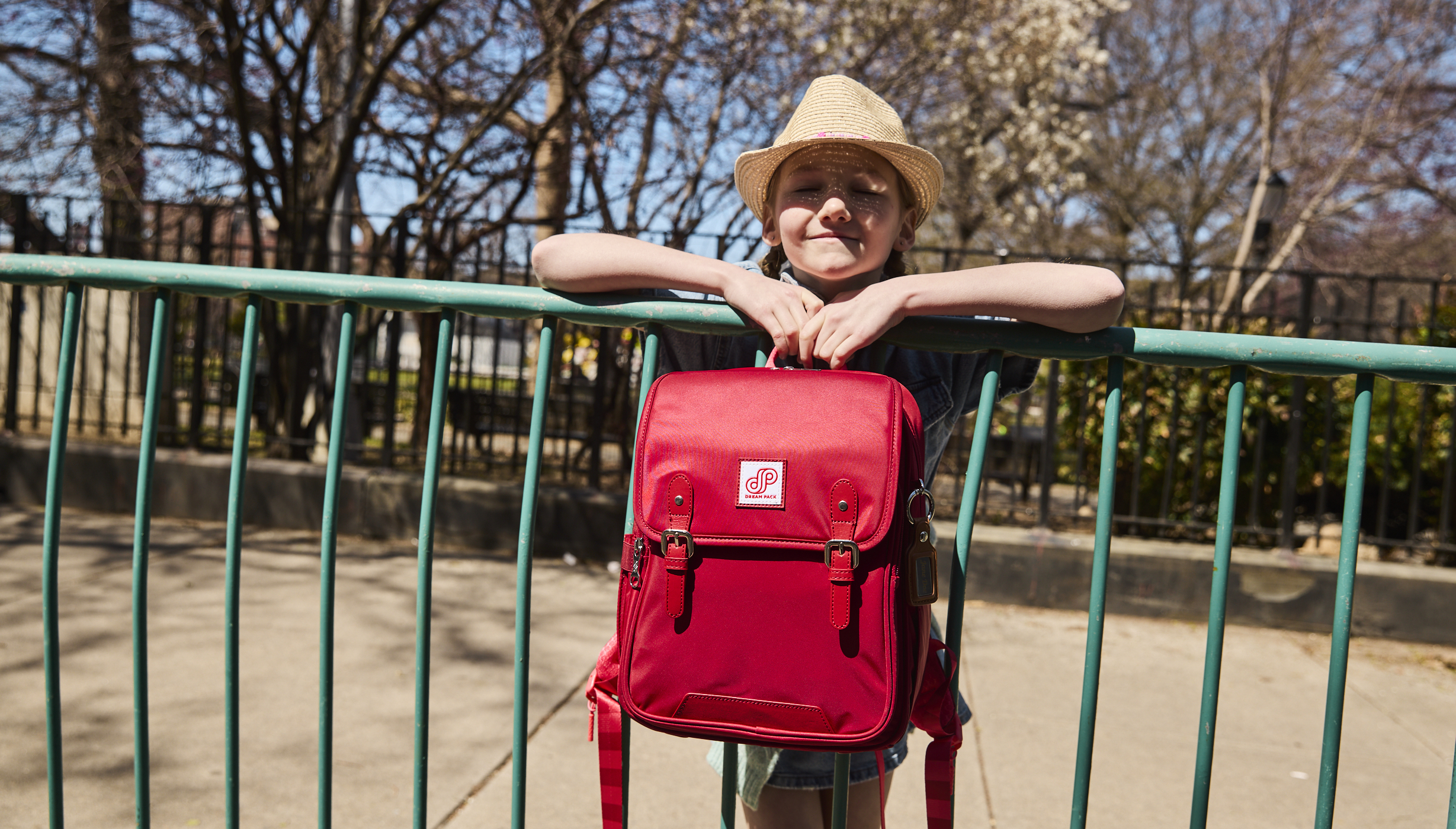5 Backpack Habits That Set Kids Up for Academic Success
Academic success does not begin inside the classroom. It begins at home, often in the quiet and repeated tasks that shape a child's routine. One of the most overlooked tools in that daily rhythm is the school backpack. While it may appear to be just another supply on a list, a backpack has the power to influence how a child starts the day. A thoughtfully packed, well-organized backpack helps students arrive at school feeling calm, confident, and ready to learn. It supports preparation, reduces forgotten materials, and encourages a sense of ownership over time and space.
However, owning a backpack is only the starting point. Even the most durable and carefully designed ergonomic kids backpack cannot teach responsibility by itself. The real value comes from how the backpack is used. Packing it with intention, keeping it clean, storing it correctly, and checking it regularly are all habits that build real-world skills. Children who follow consistent backpack routines begin to absorb important lessons in organization, time management, and responsibility. These habits serve them well not just in school, but in life far beyond it.
Many children face academic frustration not because they are lazy or careless, but because they lack structure. Homework gets lost in messy compartments. Papers go home wrinkled and unread. Supplies disappear into a jumble of items with no designated place. By helping a child build healthy backpack habits, parents give them a foundation that supports better focus, stronger routines, and improved academic outcomes. Just like brushing teeth or preparing lunch, managing a backpack should be part of a child’s daily rhythm.
This article outlines five simple but powerful backpack habits that every student can benefit from. These are not complicated systems or long checklists. They are straightforward, practical steps that support real improvement in both school readiness and personal growth. Whether your child is just beginning their education or learning how to balance a heavier workload, these habits help foster clarity, confidence, and consistency.
At DreamPack, we believe backpacks should do more than carry school supplies. Our durable, ergonomic kids backpacks are designed to support the kind of structure that leads to lasting success. With the right tools, the right guidance, and the right habits, children can approach every school day with confidence. Let us take a closer look at the small backpack routines that can make a big difference.

1. Daily Backpack Checks
A short, consistent backpack check each day can make an enormous difference in a child’s school experience. It takes only a few minutes, but the impact is lasting. Forgotten homework, missing permission slips, and unexpected morning stress often come from disorganization, not carelessness. A quick review of the backpack before bedtime or just after waking up allows children to catch those problems early. Are all completed assignments packed and ready to go? Is there anything from yesterday that should be removed or cleaned out? Is the lunchbox packed and the water bottle refilled? These questions form the basis of a routine that promotes both independence and calm.
When children are encouraged to look through their bag with intention, they begin to anticipate their needs and take charge of their responsibilities. This habit builds accountability. It also teaches children that being prepared is not something that happens by accident—it is something they can control. What starts as a guided check with a parent soon becomes a self-led routine that contributes to smoother mornings and stronger school performance.
A well-organized kids backpack makes this habit much easier to establish. When a backpack includes clear compartments for folders, supplies, and personal items, children know exactly where things belong. There is no need to dig through a messy pile to find a pencil or a notebook. Over time, the structure of the backpack encourages the structure of the mind. Children begin to notice what is missing or out of place without needing to be reminded. They learn to think ahead, make decisions, and approach each school day with intention.
At DreamPack, our ergonomic backpacks for kids are designed with features that support this kind of daily clarity. From intuitive pocket layouts to easy-access compartments, every detail is made to help children stay organized. A backpack that works with their habits—not against them—makes success more likely and stress far less common.

2. Weekly Cleanouts
Even children who stay organized throughout the week tend to accumulate clutter inside their backpacks. Loose papers, pencil shavings, empty snack wrappers, broken crayons, and forgotten notes all begin to pile up with surprising speed. Left unchecked, these small messes can lead to frustration, confusion, and unnecessary stress. That is why setting aside time for a regular weekly cleanout is such an important habit. One evening each week—such as Sunday night before the school week begins—is the perfect moment to empty the bag completely, remove anything that does not belong, and repack it with fresh intention.
This process takes just a few minutes, but it creates space for clarity and calm. Children begin to understand that cleanliness is not about perfection—it is about control and care. A tidy backpack is easier to navigate, more pleasant to carry, and far less likely to cause embarrassment at school. Weekly cleanouts also reduce the risk of overlooked assignments, missing items, or forgotten lunch containers that can create unpleasant surprises during the week.
A quality kids backpack that is designed for easy access and simple maintenance makes this habit much more achievable. At DreamPack, we design our ergonomic kids backpacks with wipeable interiors, structured compartments, and easy-to-clean materials that simplify the cleanup process. Children can open every pocket, shake out crumbs, and see what needs attention without feeling overwhelmed. When a backpack is built to stay organized, children are more likely to keep it that way.
Regular cleanouts also teach deeper lessons in ownership and pride. When children see their backpack not just as a container but as something they manage and maintain, they take greater responsibility for its condition. Over time, this practice helps reinforce the value of preparation, the importance of self-care, and the satisfaction that comes from having a clean and functional space to call their own.
3. Packing by Category
Children thrive on structure, and one of the most effective ways to create that structure is by teaching them to pack their backpack using categories. Rather than tossing everything into one large compartment, guide your child to group their items based on purpose. Place homework folders in the main academic section, store lunch in a separate compartment, keep writing tools in a designated pouch, and slide the water bottle into the side mesh pocket. When each item has a specific home inside the backpack, the entire routine becomes more predictable and less stressful.
This method does more than just save time in the morning. It strengthens a child’s ability to mentally sort and manage information—a skill known as executive function. Children who understand where their supplies belong are better able to plan ahead, retrieve items quickly, and stay calm in moments of pressure. They are also far less likely to misplace important materials, forget lunch, or lose track of their assignments. Over time, this habit helps them approach both schoolwork and life with greater clarity and control.
At DreamPack, we build custom kids backpacks with these needs in mind. Our bags include clearly defined compartments, intuitive layouts, and specialized storage options such as tech sleeves, mesh pockets, and zippered organizers. These design features are not just for convenience—they actively reinforce the habit of sorting and packing by category. When a child’s backpack supports their thinking process, it becomes a tool that builds confidence and order throughout the school day.
This packing strategy also makes it easier for children to check their backpack independently. They do not need to guess if something is missing. They know where everything should be, and if a pocket is empty, it serves as a visual reminder. This not only increases a child’s sense of responsibility but also makes daily transitions smoother for both the child and the parent. A backpack packed by category is more than organized—it is efficient, functional, and built for success.
4. Pack the Night Before
Mornings are often the most rushed and stressful time of day for families. Alarms go off, breakfast is rushed, shoes are missing, and backpacks are tossed together at the last second. In that whirlwind, it is no surprise that items get forgotten—homework, permission slips, water bottles, or even lunch. One of the simplest ways to avoid this kind of morning chaos is by helping your child pack their backpack the night before. This small shift in routine creates a sense of control that can transform how the entire day begins.
Even five minutes in the evening can be enough to review checklists, repack essential items, and ensure nothing has been overlooked. It also gives parents a natural window to check for school notes or upcoming deadlines without the pressure of the clock. When everything is already in place by bedtime, the morning becomes a time for calm—not correction. Children walk out the door feeling prepared and proud, rather than scattered and stressed.
This habit supports not only punctuality but also emotional stability. Children who pack in the evening tend to fall asleep more easily, knowing that they are ready for the next day. They wake with a sense of readiness instead of worry. Over time, this leads to stronger self-discipline and a growing sense of independence. The backpack becomes a symbol of routine, not a source of surprise.
A well-structured kids backpack can make this evening habit even more effective. At DreamPack, our bags are designed to simplify the packing process with intuitive layouts, quick-access pockets, and reliable compartments for every category of school gear. Children know exactly where each item belongs, which makes evening preparation quick and satisfying. Packing at night is more than a time-saver—it is a confidence builder, and one of the most powerful habits a student can form.
5. Handle with Care
A backpack is more than a bag. It is a daily tool that protects important materials, supports posture, and helps children stay organized. Yet too often, backpacks are treated carelessly. They are dragged across floors, tossed onto buses, or stuffed until the zippers strain. Over time, this rough treatment shortens the life of the bag and can even damage the items inside. Teaching children to handle their backpack with care is a simple habit that leads to greater responsibility and long-term savings.
Start by helping your child understand why backpack care matters. When a zipper breaks or a strap tears, it does more than inconvenience the family—it can cause stress and embarrassment at school. A backpack that is well-maintained helps avoid these problems. Encourage your child to place their bag down gently, avoid overloading it with unnecessary items, and use the compartments as they were designed. With practice, they will begin to treat the backpack not as a toy, but as something valuable that deserves respect.
This habit also supports emotional maturity. Children who care for their belongings tend to approach other responsibilities with greater thoughtfulness. They learn that maintenance is part of ownership, and that how we treat our tools reflects how we manage our time and energy. These are small but meaningful lessons that extend far beyond the classroom.
At DreamPack, we craft ergonomic backpacks for children that are built to withstand real-life use. Reinforced seams, strong zippers, and durable materials offer lasting protection—but these features work best when paired with good habits. A well-made backpack lasts longer and performs better when it is handled with intention. By teaching children to care for their backpack, parents are also teaching respect, responsibility, and self-reliance.

Conclusion: Small Habits, Big Results
Academic growth is built on more than lessons and homework. It depends on the daily habits that shape a child’s experience, both in and out of the classroom. Strong backpack routines are among the simplest yet most powerful ways to support that growth. When a child takes a few minutes each day to check, clean, and organize their school bag, they are learning far more than how to keep things neat. They are learning how to manage their time, take responsibility for their actions, and prepare for each day with purpose.
These habits are not about perfection. They are about progress. They teach children that being ready is a skill they can practice, and that small, consistent actions can lead to bigger achievements. From smoother mornings to higher confidence in the classroom, the benefits of strong backpack habits show up in every part of a child’s school life.
At DreamPack, we believe backpacks should do more than carry books. They should support the daily routines that help children feel confident, capable, and in control. Our ergonomic kids backpacks are designed with that goal in mind. With thoughtful layouts, durable construction, and kid-friendly features, our bags help children build habits that make school days smoother and learning more enjoyable.
Explore our full collection of durable, ergonomic kids backpacks and give your child the tools to develop confidence, independence, and success—one organized school day at a time.
FAQ: Building Better Backpack Habits
How early should I start teaching backpack habits?
You can begin as early as preschool. Even young children benefit from simple routines like packing folders and checking their supplies. The key is to keep it age-appropriate and consistent. Habits formed in the early years often stick the longest.
What if my child resists doing backpack checks?
Start by doing the routine together and making it part of your shared schedule. Turn it into a game, a checklist, or a small evening ritual. Over time, your child will gain confidence and want to do it independently. Reinforce success with praise, not pressure.
How can I make cleanouts easier for my child?
Choose a backpack with simple, open compartments that are easy to access. Set a regular cleanout day and do it with your child at first. Empty everything, talk through what stays or goes, and make it quick and positive. Repetition will build routine.
Do these habits help with academic performance?
Yes. Organizational routines like backpack checks and packing by category help students manage time, reduce stress, and stay focused. Children who feel prepared are more confident and more likely to perform well in class.
What type of backpack works best for building good habits?
A high-quality, ergonomic kids backpack with labeled compartments, padded straps, and a structured frame makes organization easier. Look for one that fits your child’s body properly and supports their routine with built-in functionality.
Can these habits be taught to older children too?
Absolutely. While younger kids adapt quickly, older children benefit just as much from structure and routine. You may need to adjust your approach to match their age and level of independence, but the core habits are useful at any stage.